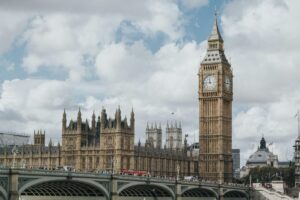The latest data from the ONS has revealed that UK CPI inflation has stuck at 2.2% in the year to August, the same result as reported in July – and still above the BoE’s 2% target rate.
Higher airline ticket prices have particularly fuelled the latest inflation trends with the largest offsetting downward contributions coming from motor fuels, and restaurants and hotels.
As advisers and investment strategists anticipate not only what this inflation data means for clients, there are also big implications for the Bank of England MPC’s decision on UK interest rates tomorrow, it seems as if today’s data hasn’t given much clout to those who would favour a further cut.
Given the close call last month with a 5 to 4 vote in favour of cutting, will we see a further fall in interest rates tomorrow? And we’re pretty sure we’ll see an interest rate cut from the Fed later today, the magnitude of such a cut might well prove influential for the MPC tomorrow.
Daniel Casali, chief investment strategist at wealth manager Evelyn Partners, comments: “Although the core measure surprised on the upside in August, the broad downward trend in lower UK CPI inflation is intact, allowing the Bank of England (BoE) to cut interest rates over the coming months..
However, given that services CPI inflation remains elevated at 5.6% year-over-year and economic growth has picked-up in the first half of 2024, the BoE will probably take a cautious approach in loosening unless there is significant belt tightening coming after the budget on 30 October that dampens growth expectations.
Looking at it relatively, the futures markets point to a more rapid pace of rate cuts coming out of the US than in the UK. By June 2025, the market expects the Fed base rate to be 3.0%, compared to 3.5% for the BoE, when the current rates are 5.5% (upper bound) and 5.0%, respectively.
Higher relative rates in the UK are likely to play out through sterling appreciation against the US dollar. Other major currencies (i.e. the euro and yen) could also make gains against the US dollar as the Fed becomes dovish.
The bottom line here is that a weaker dollar indicates that there is greater supply of US dollars floating around the financial system compared to demand. On balance, this is favourable for equities, as investors seek a home to park their money.
Another beneficiary from US dollar weakness is gold bullion. As the greenback falls in value, the US dollar-denominated gold price becomes cheaper to non-dollar investors, and this creates demand.
Moreover, the gold price is supported by secular foreign central bank bullion purchases. This follows Western financial sanctions against Russia after its invasion of Ukraine: most notably the freezing of Russia’s overseas assets, including its holdings of US government debt. Such action may encourage other major holders of US treasuries, like China and Saudi Arabia, to recycle less of their trade surpluses into foreign bonds over fears that these assets could be seized in the future. Considering this risk, central banks outside Western financial systems will increasingly view gold – which can be held physically within national borders – as an alternative to government bonds, creating a new structural demand driver for bullion.
The broader trend of lower UK inflation should encourage the BoE to cut interest rates this year, but at a relatively slower pace compared to the US. Potentially, this should provide upside for the sterling exchange rate against the US dollar. Gold will continue to benefit from broad-based weakening in the greenback and secular bullion demand from central banks in emerging economies. Gold also provides some diversification qualities in portfolios to boot.”
Abhi Chatterjee, Chief Investment Strategist at Dynamic Planner said: “Inflation, as measured by the Consumer Price Index, remained higher than the Bank of England target at 2.2%. Services inflation was higher than expected at 5.6%. This along with the recent public sector pay deals could prove that inflation remains stickier. This latest read of consumer prices takes the possibility of interest rate cuts tomorrow off the table. It may also mean that the trajectory of the Bank of England remains in “wait and watch” mode. While there are expectations for rate cuts later in the year, future prints of inflation will be an important factor in these decisions.
“As growth stagnates and inflation remains persistent, the quandary that the Bank faces is the choice between two evils – should it favour growth and cut rates, thereby possibly fuelling inflation or prioritise controlling inflation by slowing down the pace of rate cuts, thereby compromising growth? This is akin to choosing between the Scylla and the Charybdis – either of which could possibly lead to unforeseen consequences. In the meanwhile, households continue to struggle under the burden of rising prices, which along with higher energy prices already declared by OFGEM, will reduce disposable income and hinder consumer confidence and spending.”
Rachel Winter, Partner at Killik & Co. isn’t banking on a further cut tomorrow saying: “While the headline rate of inflation has stayed the same, the Bank of England will be disappointed by the higher core inflation figure. Core inflation excludes the traditionally volatile components of food and energy, and the recent uptick suggests there is still too much demand in the UK economy.
“This could put a September interest rate cut out of reach, and it also makes the case for future rate cuts more difficult this side of Christmas. For investors, as uncertainty around future rates lingers, the importance of maintaining a well-diversified portfolio across multiple asset classes remains. Short-term volatility is a concern as we approach Labour’s first Budget, and diversification will help to protect against sector-specific shocks.”
Tom Stevenson, investment director at Fidelity International, said: “The latest inflation data delivered another headache for the Bank of England’s rate setters. While the headline rate remains unchanged at 2.2%, close to the Bank’s target, core inflation remains sticky, up from 3.3% to 3.6%. Inflation in the important services side of the economy, driven in large part by wage growth, rose from 5.2% to 5.6%.
“The mixed messages in today’s inflation data underline the challenge the Bank of England faces in setting monetary policy in a less stable and predictable environment for prices. With the new Labour government pushing for higher growth and productivity, and without the stabilising forces of globalisation, cheap energy and EU membership, inflation is likely to be more volatile in future.
“However, the direction of travel for UK interest rates looks set even if the timing of rate cuts is not. With growth stagnating over the summer and headline inflation remaining close to target, the next cut looks nailed on for November, even if it does not come tomorrow. That should keep a lid on the pound, whether the Federal Reserve opts for the expected quarter point rate cut this week or the jumbo half point cut that remains a possibility.
“For investors, the window of opportunity to lock in higher interest rates on cash is starting to close.”
Jonny Black, Chief Commercial & Strategy Officer at abrdn adviser, said: “The Bank of England will be pleased that last month’s inflation uptick has met a quick end.
“That being said, Andrew Bailey himself has warned that considering this ‘job done’ might be premature. These are still volatile conditions.
“Advisers have a key role to play in helping clients reflect on the experience of the past few years and stressing why inflation mitigation strategies are so important in their planning, and to re-assure them that their plans have these in place.”
Andy Mielczarek, CEO of Chetwood Financial, said: “Inflation holding steady after recent sharp drops is a further shot in the arm for both consumers and businesses. Indeed, this relative period of calm sets the stage for continued recovery and brighter economic prospects.
“The Bank of England will still be watching closely, but with inflation stable, today’s figures are unlikely to prompt any major shifts in their short-term strategy. Striking the right balance on interest rates is complex, but we’re hopeful they can maintain this positive momentum.
“Consumers can take comfort knowing we’re much closer to the Bank’s target rate than we were a year ago. Prices may still be high, but rising wages should start to ease the pressure. Meanwhile, savers could still capitalise on higher fixed-term rates before potential cuts arrive.”
Lily Megson, Policy Director at My Pension Expert said, “Inflation remaining sticky as it wavers above target levels is a reminder that the financial pressures faced by savers aren’t going anywhere just yet. For those in or approaching retirement, who have contended with rising costs eroding the purchasing power of their pension pot, this only reinforces the need for careful financial planning.
“Under-saving for retirement is a major issue, and now more than ever, it’s crucial that retirees and savers have access to the right tools and guidance. The government must finally prioritise financial education and ensure that independent financial advice is readily accessible, so people can reposition themselves during this period of uncertainty with confidence and stay on track to meet their retirement goals.”















